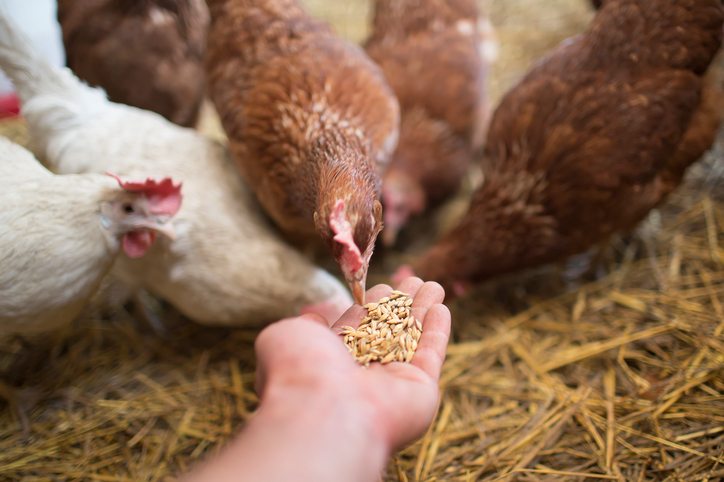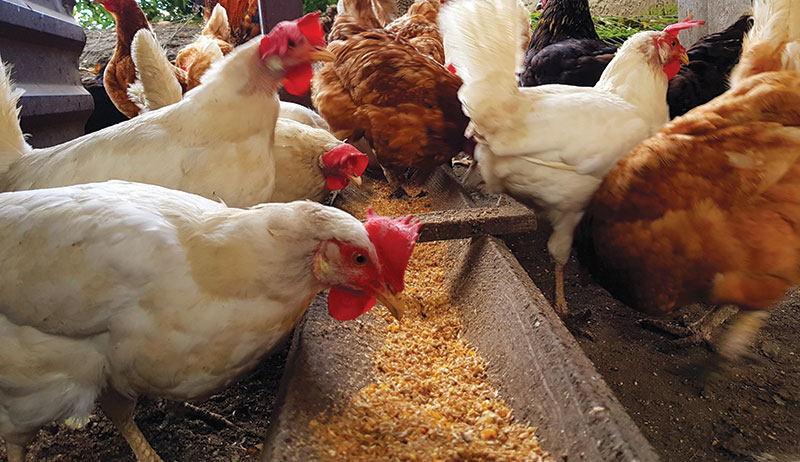Black soldier fly larvae (BSFL) are becoming increasingly popular in poultry farming. As we look at this tremendous technology, many ask, How much black soldier fly larvae do I feed my chickens? Whether you’re a seasoned poultry farmer or just getting started, understanding the proper quantity to provide your flock is crucial.

The Benefits of Black Soldier Fly Larvae for Chickens
Black soldier fly larvae offer a nutrient-rich option that enhances poultry health. They are packed with protein, calcium, and essential amino acids. Using BSFL as a part of your chickens’ diet can improve egg production, feather quality, and overall health.
Why Choose Black Soldier Fly Larvae?
Feeding black soldier fly larvae to chickens is not just a fad. Here’s why this is a terrific choice:
- High Protein Content: BSFL contain up to 42% protein.
- Rich in Calcium: Essential for eggshell formation and bone health.
- Sustainable Option: They are easy to farm and require minimal resources.

The Calculated Amount: How Much is Enough?
Determining the right amount of black soldier fly larvae to feed your chickens can depend on several factors such as age, breed, and purpose (meat or eggs). However, as a general guideline, it’s safe to offer 5-10% of the total feed intake in BSFL.
Guidelines for Different Chicken Breeds
Here are some specific guidelines:
- For small breeds: 5% of their diet.
- For larger or jumbo egg-laying breeds: up to 10% of their diet.
- For meat-producing breeds: Around 7.5% of their diet.

Factors Affecting the Amount of Black Soldier Fly Larvae
Age of the Chickens
Chicks versus adults have different nutritional needs. Young chicks can start with a lower amount of BSFL and gradually increase the quantity as they grow.
Purpose: Meat vs. Eggs
If you’re raising chickens primarily for meat, they will have slightly different protein requirements compared to those being raised for egg production.
Supplementing with Other Feeds
BSFL should not be the sole feed source. Ensure a balanced diet by supplementing other grains, seeds, and greens.

How to Introduce Black Soldier Fly Larvae to Your Chickens
Introducing a new feed type requires a gradual approach. Start by mixing a small quantity of BSFL into their existing feed. Observe how your flock responds and gradually increase the amount over a week.
Monitoring Your Flock’s Health
Regularly check the health and behavior of your chickens. If you observe any adverse effects, adjust the BSFL proportion in their diet.
Storage and Handling
Store BSFL in a cool, dry place. This ensures they remain fresh and free of contaminants.
Black Soldier Fly Larvae Production Techniques
Producing black soldier fly larvae at home can be a cost-effective and sustainable option. Composting food waste to produce BSFL not only reduces waste but also provides a constant food source for your chickens.
Setting Up a BSFL Farm
Setting up your BSFL farm can be straightforward. You’ll need a container, food scraps, and a moisture source.
Feeding and Harvesting
Feed your larvae a mixture of kitchen scraps. Harvest them once they’ve grown to a suitable size, usually around 14 days.
Common Questions Answered
Below we address some of the most frequently asked questions on this exciting topic:
How Often Should I Feed BSFL to My Chickens?
You can provide BSFL daily as part of a balanced diet, but not as the sole food source.
Can I Feed Dried Black Soldier Fly Larvae?
Yes, dried BSFL are also highly nutritious and can be mixed with regular feed.
What is the Cost of BSFL?
The cost can vary, but producing them at home can save money in the long run.
Conclusion
Feeding your chickens black soldier fly larvae is a fantastic way to enhance their diet with a sustainable protein source. With proper guidelines on the amount to feed, you can see numerous health benefits in your flock. Make BSFL a part of your poultry feeding routine and experience the many advantages for yourself!
For more detailed information on the best backyard chickens, you can visit best backyard chickens.
As an Amazon Associate, I earn from qualifying purchases.









